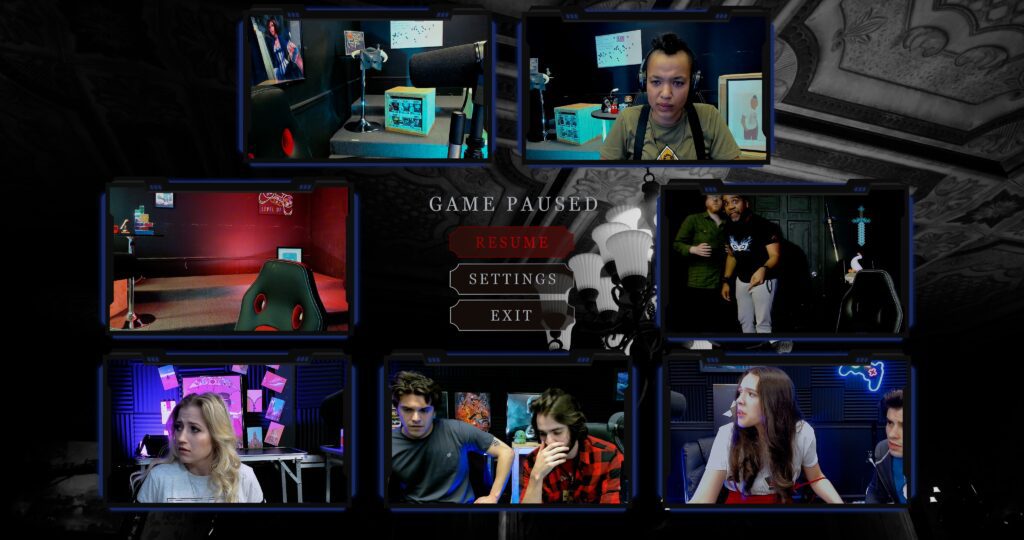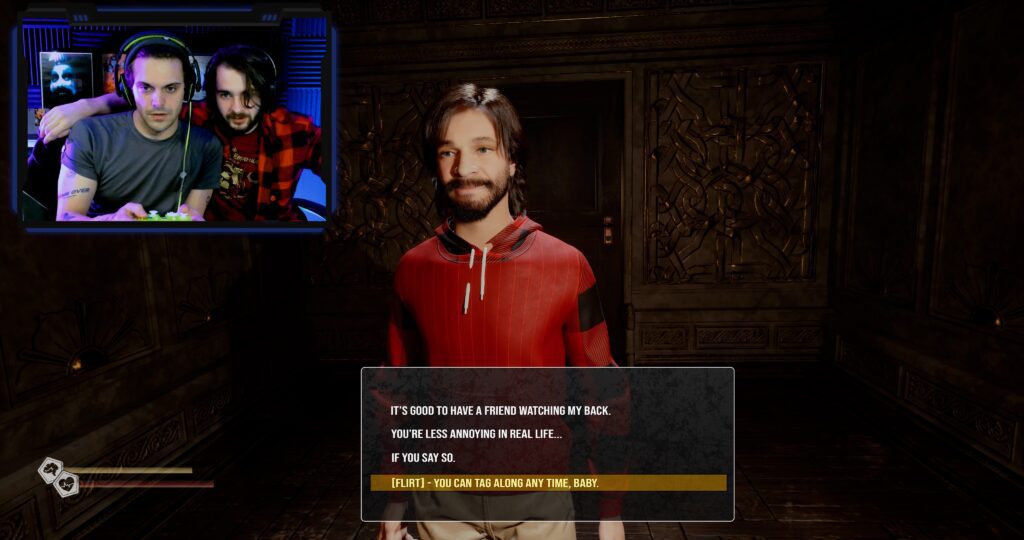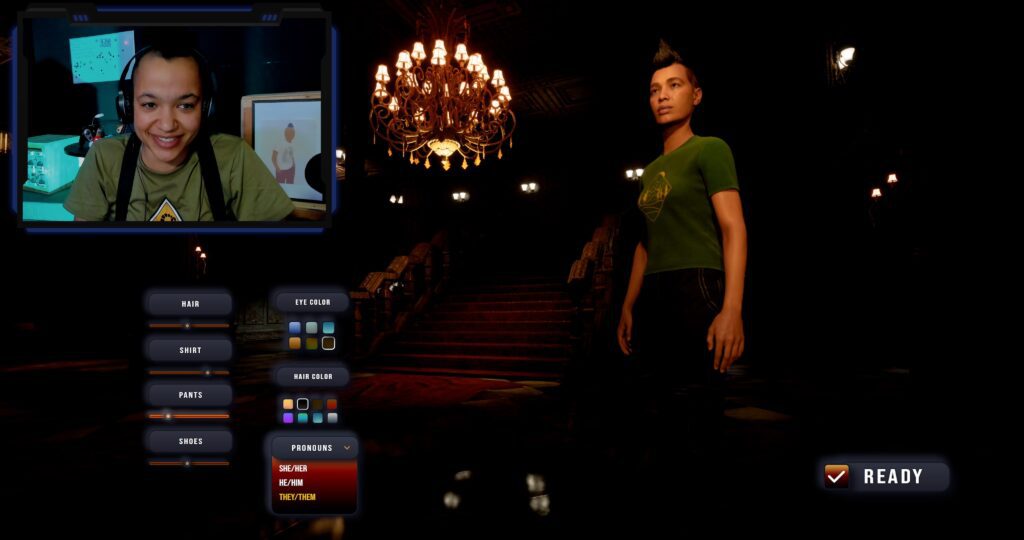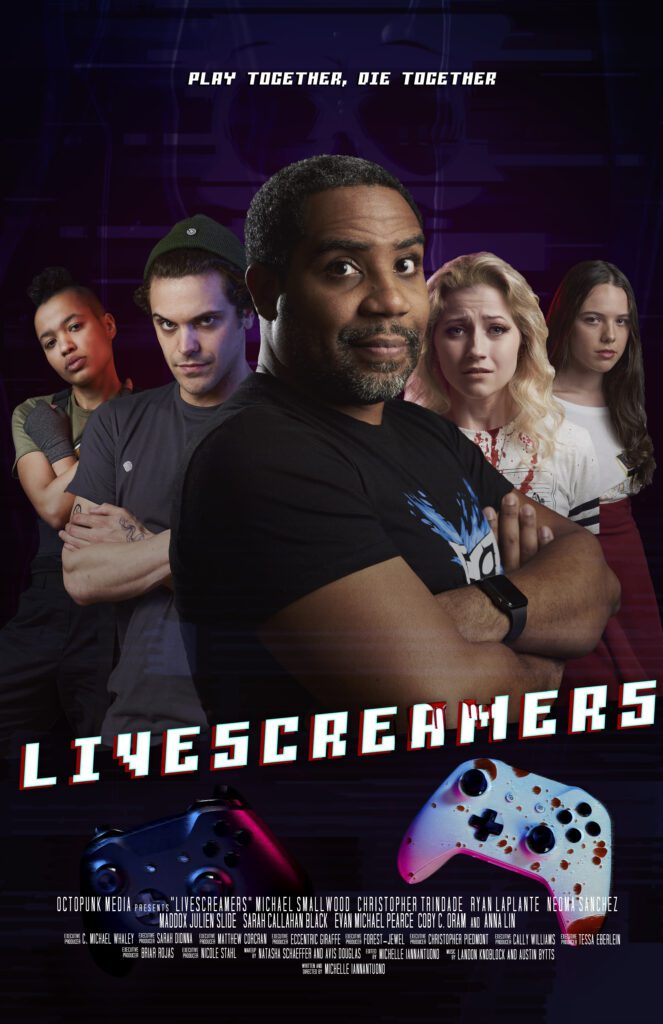Octopunk Media is the perfect name for Michelle Iannantuono’s production company. The image of the octopus–a highly intelligent, adaptable, and many-legged beast–captures the spirit perfectly. Michelle is, first and foremost, a storyteller, and she’s worked in many mediums to get her stories into the world. I got connected to Michelle because of her work in film, but she told me “what it comes down to is just whatever medium will tell the story in the best way.” She’s worked in film, video games, and has even published a novel. “Any way to tell stories I have explored or will explore. I’m not just isolated to film.” I asked her about some of her other interests, which are extremely varied. “I just took a video game design class. I’m taking animation classes, so I’m moving more into the direction of making animated movies using the unreal engine and making actual video games that are playable. My spouse and I are trying to make a tabletop RPG of our film Seven Deadly Synths. This year we really are putting the media into Octopunk Media and exploring things beyond the live action film.”
All that being said, her work certainly fits in a specific niche. “I pretty exclusively work in genre. Horror, Sci-Fi, Fantasy. All of my stuff also tends to have a crossover with queer themes, queer stories, because I am queer myself and I hire a lot of queer people. My audience is also very queer. And video games! Video games are also something that’s very important to me. My features so far have had some kind of tie to video games.”
Michelle wears many hats throughout the production process, and it’s clear that she has a ton of technical skills in addition to being a writer and director. Livescreamers was only a five-day shoot, but it was in post for over a year. “I edited it, I did the color, the sound mixing, all of that sort of normal stuff, but I also had to design, build, and capture 80 minutes worth of this custom game play.” I asked her if there was anything she didn’t do, and the answer was yes… but not a lot. “I had a few music composers who did the music, I also had a 3D generalist named Dustin Mills who modeled, rigged, and textured our Siren character, which is our main villain of the piece. […] My spouse Austin also did the final master of the sound, but I did the sound design. So every footstep, every screech, all the environmental sound, the sound of the game, I did myself.”
I always think it must be overwhelming for new filmmakers to see exactly how many skills most indie filmmakers have, so I asked her to get specific about what skills are the most important for people just starting out. “I think that you need to have one of two things. Most filmmakers don’t have both, but the successful indie filmmakers have at least one. Be a writer/director who’s good at camera, or be a writer/director who’s good at post.” She goes on to say she’s not a camera person. She’s competent, but it’s just not her thing. And focusing on post gives her a distinct advantage; after shooting, she knows the movie is going to get made. This is key, especially when the post process is as complicated as it was for Livescreamers. Knowing you don’t have to hire–and then rely on–a large team makes it that much easier to get the thing done.

I asked her to share a little more about Unreal Engine. “I’m a huge evangelist for Unreal,” she laughs. “I say it’s the most democratizing thing for filmmakers since the DSLR.” She’s not wrong; while the company announced recently that the product will likely have some costs associated with it soon, it’s been 100% free up until this point. “It’s a free resource. You can learn it, it’s really user friendly. You can also utilize the meta-humans, which is their character creation, […] where you can create photo-realistic people, kind of like the character creator in the Sims but with even more specificity. You can puppet them around and put custom animations on them.”
“The big picture of Unreal Engine is that it is a free to use game engine from Epic Games, which is based in Cary, North Carolina. It’s blown up in the past few years, so now it is not just used for game development. Epic Games has added a lot of tools for virtual production. They do a lot of stuff for The Mandalorian, for Westworld. […] They put up these LED screens and they create a digital environment.” The way that Michelle blends live action with Unreal Engine is by creating custom video gameplay and having actors appear on screen, like you might see in a Twitch stream or a Youtube play-though, but there are lots of ways to do it. “When you have a tool where you can build a digital set and the physics are all enabled and you’ve got this cut scene maker, this sequencer, […] within an hour you can have a couple of characters running around this virtual set and placing cameras and all that sort of stuff. This is a huge, huge tool, particularly for free, for anyone who works in these 3D modeling spaces.” Unreal Engine isn’t just for film and video game creators; Michelle told me about some of its other uses, from car enthusiasts creating mock-ups to the Coast Guard using it for digital training. “It’s a massively applicable tool, and only rising in the film industry.”

I ask her for her best advice for folks who are looking to get started in Unreal. “Have the right hardware for your computer,” she says. “I don’t think Unreal is too chonky in terms of the hardware, you don’t need the latest and greatest. […] Once you have the hardware in place, just download it, go through the starter kit, the starter tutorials… there are so many resources that Unreal puts out.” She tells me that Unreal Engine shares tutorials that cover a wide range of skills. “Focus on the different areas, learn each individual piece, it’s almost like learning different departments in film.” She cautions me that utilizing these resources early on in your Unreal journey is vital. “Being self-taught is hard, and you learn a lot of things that are maybe not good when you’re self-taught, and I’m speaking from experience. You also shoot yourself in the foot a little bit when you don’t look up the resources. I can’t tell you how many times I was doing something and it was so many steps and I was tearing my hair out and then I realized oh, there’s a tool that would have made my life easier if I’d only known about it.” She pauses for a moment. “I would say my biggest piece of advice is to just go get started but take the time to learn the proper workflow.”

We finished our conversation by discussing her favorite part of the filmmaking process. Based off what she’d said about post-production, I was wondering if that was her favorite part. It isn’t; exploration is.”That’s when hope is high. It all exists in your head, and you can lie to yourself and tell yourself it’s all going to go perfectly. I love the stage where we get to lie to ourselves and say this one’s gonna be different!” She’s joking, but it’s very real, as any artist knows. And the exploration period isn’t always a short one.“I really do have to just let it simmer. I know some people who just have an idea and then they sit down and write it, and I’m like, uh-uh. No. It must cook. The stars are not right. I have to wait for the stars to be right.” For Livescreamers, specifically, she told me that “I came up with the idea in 2018. I had to let it stew, I had to live in this world for several years, and then in 2020 I had lived in it enough.” This exploration period is absolutely key when we think about how long it takes to make a movie, from script to premiere. “Everything I do has to be about something. I have a lot of ideas where I’m like wouldn’t it be cool if? But then I’m like, it doesn’t ignite me in a way that I feel like it needs to to exist. It doesn’t excite me in a way that I need to fuel me to spend two years working on this thing. You have to absolutely be obsessively in love with something in order to spend two, three, four years to get it finished, and a half-assed idea will not get you there.” That’s the key, I think; if you aren’t obsessed with your project, it won’t sustain you throughout the entire process. And filmmaking is such a long process, one where you have to collaborate with a lot of other people, one where you have to think about funding and hiring and casting on top of all the creative elements that are the reason most of us got into this industry in the first place.

You can find Michelle on Instagram, on Twitter, and on the Octopunk website. Thank you so much to Michelle for sitting down with me for this conversation, and for your words of wisdom!

Leave a Reply